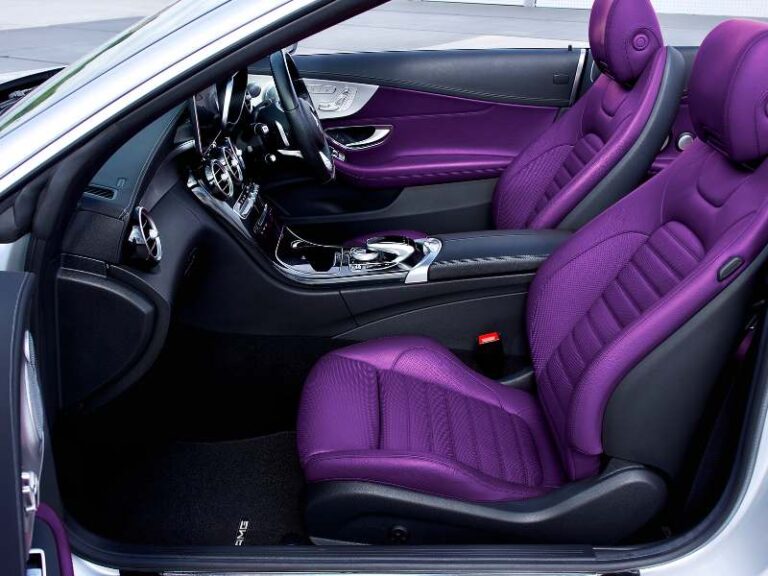What are the Cons of Seat Covers? Exposing the Hidden Downsides
The cons of seat covers include potential damage to the original upholstery and a potential decrease in comfort. Seat covers can cause wear and tear on the underlying fabric and may not provide the same level of support and cushioning as the original seats.
In addition, some seat covers may not fit perfectly, causing a poor aesthetic appearance. They can also trap dirt and debris, making them difficult to clean. Overall, while seat covers can offer protection and style, there are potential downsides to consider before purchasing them.
Seat covers, while providing protection and style, come with some drawbacks. They can potentially damage the original upholstery and reduce comfort by causing wear and tear on the underlying fabric. Fitment issues may lead to an unappealing appearance, and cleaning can be challenging with trapped dirt and debris. It’s essential to weigh the pros and cons before getting seat covers for your vehicle.
Seat Cover Drawbacks: The Whole Picture
Seat covers may seem like a great way to protect your car’s upholstery and add a touch of style. However, it is essential to consider the drawbacks that seat covers can bring. One common misconception is that seat covers offer complete protection against spills and stains. While they can provide some level of protection, it is important to note that liquids can still seep through the covers and damage the original upholstery.
Another overlooked aspect of seat cover usage is the potential for them to interfere with airbag deployment. Ill-fitting or improperly installed seat covers can prevent the airbags from deploying correctly during an accident, compromising the safety of the vehicle occupants.
Furthermore, seat covers can sometimes lead to discomfort for both the driver and passengers. Poorly designed covers may not fit properly, resulting in wrinkles, bunching, and an uneven seating surface. They may also affect the functionality of heated and cooled seats.
While seat covers can be a useful accessory for protecting your car’s interior, it is essential to consider these drawbacks and choose the right type and fit to ensure both safety and comfort on the road.
Aesthetic Concerns Unveiled
Seat covers can have some cons, particularly when it comes to aesthetic concerns. One potential drawback is the potential for an unattractive fit and appearance. Since seat covers are not custom-made for each individual vehicle, there is a chance that they may not fit perfectly or may not align properly with the seats. This can result in a less polished and neat look. Another aesthetic concern is the possibility of fabric mismatch with the original interior design. If the seat cover does not match well with the rest of the upholstery or the overall style of the car, it can create a disjointed and unappealing visual effect. Lastly, seat covers can also be a hindrance to the original upholstery’s appeal. If the seats have an attractive design or texture, covering them up may hide their unique features and diminish the overall aesthetic appeal of the interior.
Comfort And Safety Issues
Seat covers can provide a number of benefits, but it’s important to be aware of their potential disadvantages. One of the main concerns is material discomfort during different seasons. While seat covers can enhance the appearance of your car’s interior, certain fabrics may become hot and sticky in summer or cold and stiff in winter, resulting in a less comfortable driving experience.
Another issue to consider is the impact on built-in seat features and ergonomics. Seat covers may interfere with the functionality of seat controls such as lumbar support, heating, or cooling features. Additionally, they could alter the overall ergonomics of the seat, potentially affecting your posture and comfort during long drives.
Furthermore, seat covers could have safety implications for airbag deployment. If the covers are ill-fitting or made from materials that hinder the proper inflation of airbags, it may compromise their effectiveness during a collision, potentially leading to injuries.
Durability And Wear Complications
Seat covers may face durability concerns and wear complications over time. These cons can include fading, tearing, and general wear and tear due to regular use.
| What are the Cons of Seat Covers? | |
| Durability and Wear Complications | |
| Increased wear and tear on the original upholstery | |
| Seat covers may offer protection to your car’s original upholstery, but they can also contribute to increased wear and tear. Over time, the constant friction between the seat cover and the underlying upholstery can cause it to become worn and damaged. This is particularly true if the seat cover is made of a material that is rough or abrasive. Additionally, the installation process itself can lead to stretching and pulling of the fabric, further compromising its longevity. | |
| Seat cover durability versus expectations | |
| While seat covers are marketed as durable and long-lasting, they may not always live up to these expectations. Depending on the quality of the seat cover material, frequent use and exposure to sunlight can cause fading, cracking, or peeling. If the seat cover is not well-made or lacks proper stitching and reinforcement, it may quickly deteriorate and require replacement sooner than anticipated. | |
| Problems with seat cover maintenance and cleanliness | |
| Keeping seat covers clean can be a challenging task. Some materials may be difficult to clean and require special care instructions. Certain types of seat covers may also trap dirt, crumbs, and liquids, making them harder to maintain. Regular cleaning and maintenance become necessary to preserve the appearance and condition of both the seat cover and the original upholstery, adding to the overall upkeep and time investment required. | |
Hidden Costs Explored
Seat covers may have hidden costs that can detract from their benefits. These cons include potential damage to the original upholstery, ill-fitting covers, reduced comfort, and restricted access to features such as seat controls and airbags. It’s important to carefully consider these potential drawbacks before investing in seat covers.
Seat covers can offer a variety of benefits, but it is important to consider the potential drawbacks before making a purchase. Apart from the initial investment, hidden costs can arise in the long run. While seat covers are designed to protect the original upholstery, they may require replacements and adjustments over time, incurring additional expenses. This is especially true if the seat covers are not of high quality or if they do not fit properly. Furthermore, it is crucial to factor in the value of aesthetic appeal when it comes to resale. While seat covers can enhance the overall look of the interior, they may not always increase the value of the vehicle in the eyes of potential buyers. It is important to weigh the potential cons against the desired benefits when considering seat covers for your vehicle.
Practicality And Usability Challenges
Installing and removing seat covers can be a tedious task for car owners. The process requires precision and can be time-consuming, especially for individuals who lack experience in handling seat covers. Additionally, the fitment of seat covers can pose challenges, resulting in ill-fitting covers that do not provide optimum protection.
The installation of seat covers can disrupt accessibility to various functions and controls within the car. Switches, knobs, and buttons may become partially or completely obstructed, making it difficult for the driver or passengers to operate them easily. This can be particularly problematic during emergency situations when quick access to controls is crucial.
Ill-fitting seat covers can also cause obstructions and discomfort for individuals using the seats. The uneven surface and improper alignment of the cover can affect seat comfort, leading to an uncomfortable seating experience. Moreover, such obstructions may affect the intended functionality of features such as airbags, seat belts, and seat adjustments.
What Are The Cons Of Seat Covers? Exposing The Hidden Downsides
Seat covers are often considered a great way to protect and preserve car seats. However, it is important to be aware of the drawbacks they may have:
- Interference with Safety Features: While seat covers can provide aesthetic appeal, certain types can interfere with the functionality of side airbags or seat belt pretensioners, compromising the safety of the passengers.
- Difficult Installation: Some seat covers require complex installation processes, making it difficult for users to fit them properly in their vehicles. Ill-fitted seat covers can result in discomfort and reduced effectiveness.
- Heat Retention: Seat covers made of certain materials, such as vinyl or leather, can accumulate heat, especially in warmer climates. This can lead to uncomfortable seating conditions and excessive sweating.
- Increased Cleaning Efforts: Although seat covers are meant to protect the original upholstery, they themselves require regular cleaning. Removing and washing seat covers regularly can be time-consuming and inconvenient.
- Reduced Resale Value: Installing seat covers may negatively impact the resale value of a car. Potential buyers may view them as a sign of hidden damage or poor maintenance, leading to lower offers.
Understanding these hidden downsides will help you make an informed decision about whether seat covers are the right choice for your vehicle.
Impact On Vehicle’s Resale Value
Effect on perceived vehicle condition and care: Seat covers can have a negative impact on the perceived condition and care of a vehicle. Some potential buyers may view seat covers as an indication that the original upholstery is in poor condition or that the vehicle hasn’t been well-maintained. This perception could affect their willingness to pay the desired price or even deter them from considering the purchase altogether. Buyers tend to prefer vehicles with well-maintained and clean original upholstery.
Buyer’s preference for original upholstery: Many buyers place a high value on the original upholstery of a vehicle. They prefer the look, smell, and feel of factory-installed upholstery, as it adds to the overall appeal and authenticity of the vehicle. Seat covers may detract from this preference and can be considered as a less desirable option. Resale value can be affected if buyers are willing to pay less for a vehicle with seat covers compared to one with well-preserved original upholstery.
Seat cover wear influencing buyer perception: The condition of seat covers themselves can influence buyer perception. If the seat covers show signs of wear such as tears, fading, or stains, it can further decrease the resale value of a vehicle. Buyers are more likely to associate worn seat covers with neglect and potential maintenance issues, which may lead to lower offers or more bargaining power on the buyer’s end.
Environmental Considerations
When it comes to assessing the eco-footprint of manufacturing, it is important to consider the materials used in the production of seat covers. Many common seat cover materials, such as vinyl and leather, require significant energy and resources to manufacture. These processes often involve the use of chemicals and pollutants that can harm the environment.
In terms of longevity, seat covers made from synthetic materials like vinyl and polyester may not be as durable as natural materials like cotton or wool. This can result in a shorter lifespan for the seat cover, leading to increased waste and the need for more frequent replacements.
Additionally, the biodegradability of common seat cover materials is another concern. Synthetic materials like vinyl can take hundreds of years to decompose, contributing to landfill waste and pollution.
Furthermore, the disposal of seat covers can also have a negative environmental impact. Improperly discarded seat covers can end up in landfills, where they can release toxic substances into the soil and water.
| Pros | Cons | |
|---|---|---|
| Environmental Considerations | Assessing the eco-footprint of manufacturing |
|
Installation And Compatibility Hurdles
One of the main drawbacks of seat covers is the challenges that arise during installation and compatibility. Universal seat covers are designed to fit a wide range of car models, but they may not be a perfect fit for your specific vehicle. This can result in a cumbersome installation process, requiring adjustments and modifications to make the cover fit properly.
Custom-fit seat covers, on the other hand, are tailored to fit your car’s seats perfectly. However, even with custom-fit covers, there can be compatibility issues with certain features in your vehicle. For example, if you have heated seats or sensors built into your seats, the seat cover may interfere with their functionality. This can be a significant inconvenience, especially during cold weather.
Another challenge with seat covers is the tendency for them to slip and require frequent fit adjustments. Over time, the constant movement of the seat cover can lead to a sloppy appearance and compromised protection.
These installation and compatibility hurdles are important factors to consider when deciding whether to invest in seat covers for your vehicle.
Infrequent Yet Noteworthy Drawbacks
Seat covers, while popular for their protective properties, do come with a few cons that are worth considering. One potential issue that may arise is signal interference with seat-integrated antennas. These antennas, commonly found in modern vehicles, may experience reduced performance or complete loss of signal due to the presence of seat covers. It is advisable to check compatibility with the vehicle’s antenna system before purchasing seat covers.
Another uncommon drawback is the possibility of rare allergic reactions to seat cover materials. Some individuals may have sensitivities or allergies to certain fabrics or chemicals used in the manufacturing of seat covers. It is essential to carefully review the materials used in a seat cover and opt for hypoallergenic options if necessary.
Furthermore, it is important to consider the legal considerations associated with seat covers in various regions and countries. Certain jurisdictions may have regulations in place regarding the use of seat covers, especially those that pertain to their impact on airbag functionality or visibility. It is advisable to familiarize oneself with local laws and guidelines to ensure compliance and safety.
Frequently Asked Questions Of What Are The Cons Of Seat Covers?
What Are The Cons Of Using Seat Covers?
Using seat covers can sometimes result in a loose fit or wrinkling, affecting the aesthetics. It may also interfere with the functionality of certain features like seat controls or airbags. Seat covers are prone to wear and tear over time, requiring frequent replacement.
Additionally, some seat covers may not be compatible with heated or ventilated seats, compromising their effectiveness.
Conclusion
While seat covers can provide protection and enhance the appearance of your car seats, there are some drawbacks to consider. Remember that seat covers can affect airbag deployment, make seats uncomfortable in extreme temperatures, and may require extra time and effort to install and maintain.
- Can I Get in a Taxi Without a Car Seat? - January 26, 2025
- Can I Get Chlamydia From a Toilet Seat? - January 26, 2025
- Can I Get an Uber With a Car Seat? - January 26, 2025






